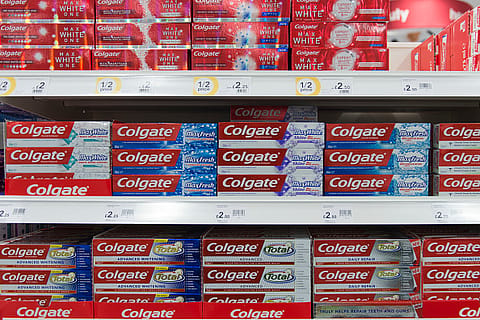Colgate India sees urban stress, rural resilience as it bets on tech, kids, and premium smiles to drive growth
While oral care penetration is now near-universal in India—with 9 out of 10 households owning a toothpaste and a toothbrush—the actual consumption habits remain concerning.

Colgate-Palmolive India is witnessing divergent consumer trends across urban segments, with signs of financial stress visible in nearly 70% of urban households—particularly those outside the top spending bracket. This comes even as the company doubles down on efforts to drive oral health awareness and increase consumption through education and tech-based outreach.
“The top 30% of urban India has been quite resilient. That’s where we are seeing opportunity to premiumise. But the bottom 70% there seems to be some amount of stress,” said Prabha Narasimhan, MD & CEO, Colgate-Palmolive India.
Despite this, rural India remains a bright spot. “In rural, again we are seeing a lot of buoyancy in terms of their consumption,” she added.
While oral care penetration is now near-universal in India—with 9 out of 10 households owning a toothpaste and a toothbrush—the actual consumption habits remain concerning. “Only 1 out of 2 rural consumers brush daily, and only 20% of urban consumers brush twice a day. In Brazil, by contrast, the average is 2.4 times a day. So the headroom opportunity is huge,” Narasimhan pointed out.
To bridge this gap, Colgate has intensified its focus on public health awareness. In November 2024, it launched the Oral Health Movement, an initiative leveraging AI to screen oral health using just a mobile phone. The campaign provides free dental checkups through a network of 50,000 dentists in partnership with the Indian Dental Association (IDA). The move is timely—with 90% of Indians facing dental issues and only 9% visiting a dentist regularly, the need to raise awareness is urgent.
This push complements Colgate’s long-running on-ground efforts like the Bright Smiles, Bright Futures school programme, which last year alone reached 8.2 million children. “These 8.2 million children carry the message home to an average of 3 to 4 people. So effectively, we’re reaching around 30–35 million people every year,” Narasimhan said. Since its inception in the 1970s, the programme has touched 185 million children across India.
The company's core products—Colgate Active Salt, Max Fresh, and Strong Teeth—have all undergone upgrades to improve scientific efficacy and sensory experience. Meanwhile, Colgate continues to expand its premium portfolio. “We’ve spearheaded that with Colgate Total and Colgate Visible White under everyday prevention and whitening. Our therapeutic range under PerioGard also sits within premiumisation,” Narasimhan said.
Recommended Stories
Even within the ₹17 toothbrush market—where most Indians retain the same brush for nine months—Colgate sees a premiumisation opportunity. The company is pushing for better brushing habits and encouraging replacement every three months, aligned with dentist recommendations.
Additionally, to meet the evolving needs of younger, more experimentative consumers, Colgate is also innovating within categories. “We launched Visible White Purple last year targeting youth who want whiter teeth instantly—it has been our most successful innovation in the history of this company,” she said. Other newer offerings include whitening pen and mouthwash sticks—a single-use sachet aimed at on-the-go freshness.
That said, the company doesn’t currently plan to enter dentist-exclusive categories like aligners or dental equipment. “We believe our dentist partners are best placed to run that, and globally also we are not in that space,” Narasimhan clarified.
The business continues to derive bulk sales from traditional trade, though modern trade and e-commerce now account for nearly 25% of revenue. E-commerce is about 6% of the business while quick commerce accounts for a third of that. “We expect all channels to grow. If you take a look at traditional trade the big job that we have is to drive consumption and as we drive consumption the big gains will come to traditional trade and as our core brands get stronger again that will be traditional trade that gets the big gains,” she said, while adding, “Purple has been amazing for modern trade and e-commerce. Max Fresh Sensorials is an e-comm exclusive and has done really well.”
(INR CR)
Despite geographic and cultural diversity posing operational challenges, Narasimhan views the Indian market as one filled with opportunity. “If you look at consumption in State A versus State B, and see a 50% difference, you’ll find that where women have a greater say in the household, toothpaste consumption is higher. These are the kinds of insights we keep discovering,” she said.